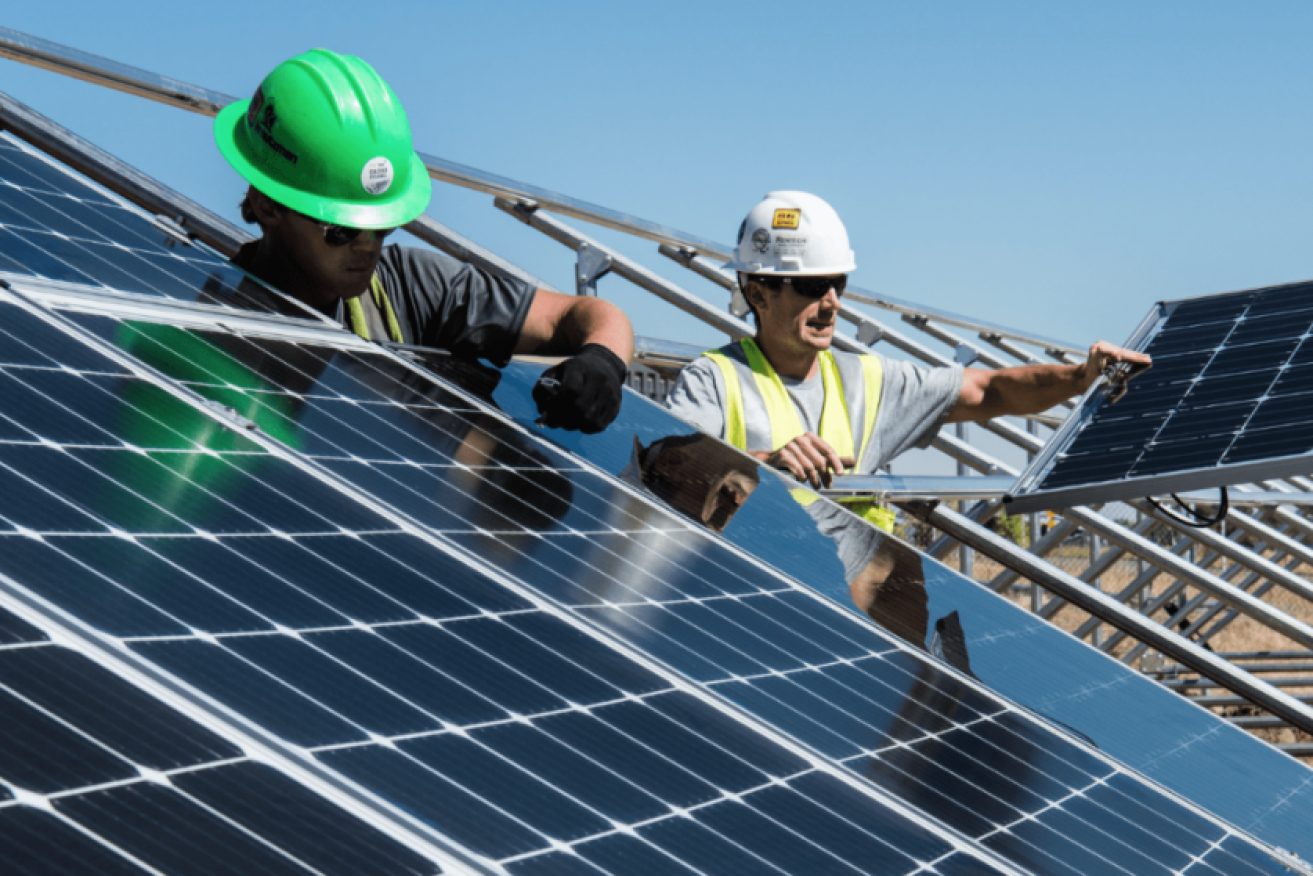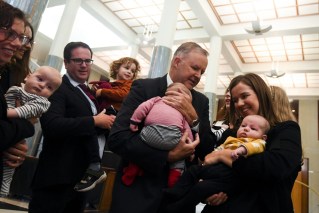A tax on sunshine, or a ray of hope for non-solar homes?
Should homeowners with rooftop solar panels pay a price to export their excess power to the grid? The Australian Energy Market Commission thinks so but not everyone agrees, writes Robert MacDonald


Leading scientist Dr Alan Finkel said Australia could straddle the old and new economies in the global shift from "petrostates" to "electrostates". (Supplied)
The Australian Energy Market Commission (AEMC) has recommended that Australians with rooftop solar panels be charged for selling their excess power to the grid.
This has immediately drawn cries of outrage from the potentially affected.
An organisation called Solar Citizens, which campaigns “to protect the rights of Australia’s two-and-a-half million solar homes and businesses”, is calling the idea a “sun tax”.
They say it isn’t fair for all sorts of reasons, among them the righteous claim that “rooftop solar benefits all energy consumers by providing cheap power to the grid”.
They argue that instead of being charged more, “solar households should be rewarded for the benefits they provide, especially as feed-in tariffs are dropping”.
The reality is that solar households have already been well rewarded, mainly at the expense of non-solar households.
And nowhere more so than here in Queensland where, 12 years ago, the Bligh Government came up with the “solar bonus scheme” to help kickstart the state’s solar industry.
The new scheme would pay homeowners and small business with rooftop solar 44 cents a kilowatt hour for the excess power generated by their domestic system – for the next 30 years, all the way out to 2028.
That was more than three times the going rate at the time and 10 times the cost of buying energy from coal-fired power stations and was a roaring success, at least in terms of encouraging new solar panel installations.
Two classes of energy consumers quickly emerged in Queensland; those with solar panels who were making money by selling excess energy back to the grid and those without solar whose bills were rising, by around $100 a year on average, because the energy companies were being forced, by government edict, to pay well over the odds for solar power.
In 2012 the newly elected Campbell Newman Government tried to cap things by cutting the feed-in tariff to 8 cents a kilowatt hour, claiming at the time that without change the program would have cost Queenslanders about $1.8 billion by 2028.
More recent work by the Queensland Competition Authority has estimated the total cost to electricity consumers over the life of the scheme (until 2028) could in fact be more than $4.1 billion and that average bills were still around $90 higher than they would otherwise be.
But the burden on non-solar households doesn’t end there.
The continuing strong growth in new rooftop solar systems is resulting in new electricity grid expenses, which are currently being borne by all customers.
And so the AEMC is arguing, in the interests of equity, among other things, that Australians with rooftop solar panels be charged for selling their excess power to the grid.
It has modelled the potential impact on customer bills if networks did introduce export charges.
“We found that 80 per cent of customers would see their bills drop because they would no longer pay for solar export services they weren’t using,” the AEMC reports.
“For the 20 per cent of customers with solar, there could be a range of export charge impacts, depending on system size.
“A 4−6kW system would still earn on average $900 – about $70 less than now.”
In other words, the “sun tax” would be roughly the same as the amount non-solar users have been paying for years to subsidise those lucky enough to get in on the Bligh Government’s solar bonus scheme.
The AEMC also argues that solar households would still be better off over the long run, even with the new charges.
It offered this explanation when it released its proposed rule changes last week:
“Today’s draft determination addresses the problem of ‘traffic jams’ on the network, which are occurring now and will get worse as more solar connects because the grid infrastructure was built when power only flowed one way.
“Blocking power exports because the grid is under strain will cost us all more, because it means less renewable, cheaper energy gets into the system.
“Doing nothing is not an option because blocking people’s power exports will cost them now and more in future.”
The AEMC argues that while an export charge on a home solar system might lead to a marginal drop in earnings, “owners will face that same drop if they are constrained from exporting energy just 10 per cent of the time.”
“Being constrained 50 per cent of the time would reduce their solar earnings by more than $300 per year.
But still, Solar Citizens is objecting to the move, claiming, among other things that there’s insufficient evidence that solar power exports are negatively impacting the network, despite operators’ claims to the contrary.
And according to Solar Citizens Australia National Director, Ellen Roberts, “Solar benefits everybody by driving down power prices, even for people without panels.”
In other words, solar is good for you, even if you’re not one of the fortunate ones being paid for your excess energy.
I’m not sure telling your opponents you know what ‘s best for them is quite the right way to win this particular argument, especially after all the money they’ve already forked out over the years to subsidise our solar citizens.












